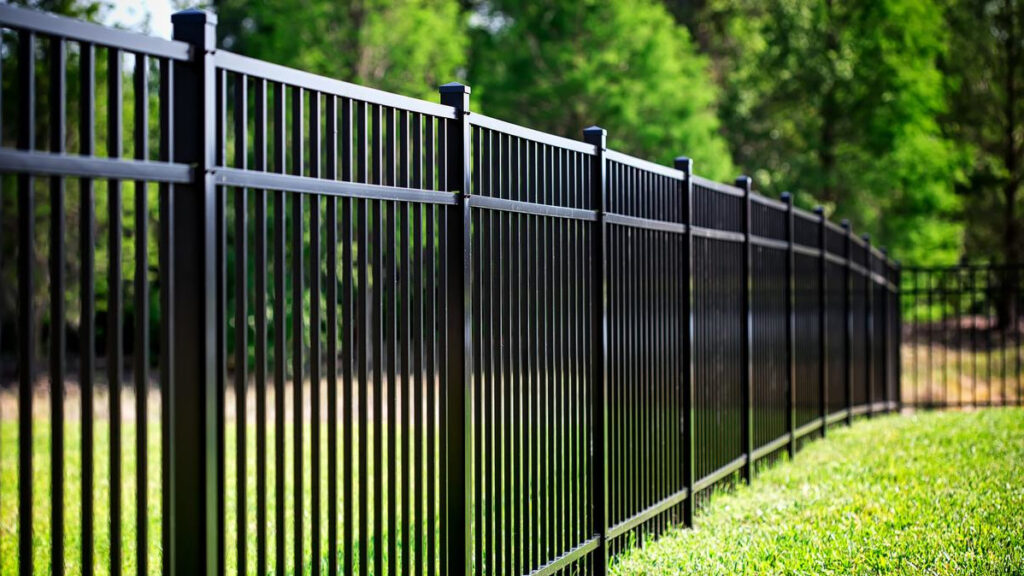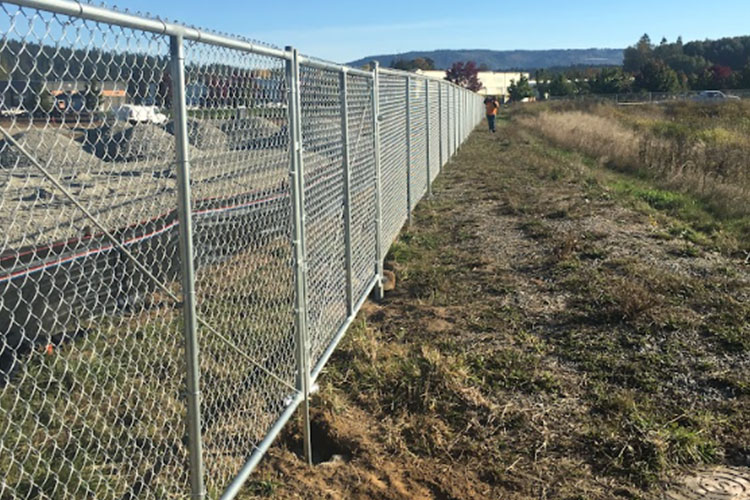How Fencing in Auckland Can Help You Avoid Boundary Disputes and Increase Property Value
How Fencing in Auckland Can Help You Avoid Boundary Disputes and Increase Property Value
Blog Article
A Comprehensive Guide to Fencing Install: What You Need to Learn About Fencing Solutions
When it involves installing a fencing, you have actually obtained a whole lot to contemplate. From choosing the right materials to comprehending neighborhood laws, each step can really feel frustrating. You'll require to assess your building and make a decision if you wish to deal with the installation on your own or employ a professional. Yet that's just the start. Let's check out the essential aspects that can make or damage your fencing project.
Comprehending Different Sorts Of Fencing Products
When you're choosing a fencing, recognizing the various kinds of fence products is vital. Steel fencing, like wrought iron or aluminum, provides toughness and elegance but may require corrosion defense. Inevitably, picking the right product will certainly aid you create a fence that fulfills your requirements and improves your residential property's value.
Analyzing Your Property and Fencing Requirements
Before you begin your fencing installation, it's important to assess your property limits and the purpose of your secure fencing. Comprehending local guidelines and permits will likewise assist you prevent any legal concerns down the line. By thinking about these aspects, you'll guarantee your fencing meets both your needs and community standards.
Property Limits and Lines
Comprehending your home boundaries is crucial for a successful fencing setup, as it not only assists you establish where your fencing will certainly go however also ensures you're valuing your neighbors' area. Begin by assessing your residential or commercial property act or study, which normally outlines the exact boundaries. You could likewise want to seek advice from a professional land surveyor if you're unsure.
Once you've established your boundaries, note them clearly with stakes or flags. This visual help will certainly guide you during the setup and protect against any kind of conflicts with next-door neighbors. Remember, regional zoning laws might determine fence positioning and elevation, so examine those laws also. Taking these steps guarantees your fence is properly placed and compliant, making the whole process smoother for you.
Objective of Fencing
Third, secure fencing can define your home boundaries, making it clear where your room ends and your next-door neighbor's begins. A well-placed fencing can assist handle noise from neighboring roads or next-door neighbors and even maintain animals and youngsters safe. By reviewing your certain demands, you can pick the best type of fence to achieve these benefits efficiently.

Local Rules and Permits
Just how can you assure your fence installation adheres to local guidelines? Beginning by getting in touch with your local zoning office or metropolitan web site. Fencing in South Auckland. They usually have standards regarding fence height, products, and placement. You'll likewise want to learn if you need a permit before beginning your task. Some locations call for licenses for any type of new fence, while others might just require them for taller frameworks.
Additionally, take into consideration property lines and any type of easements on your land. Marking your limits can prevent conflicts with neighbors or possible legal issues. By recognizing these regulations in advance, you can prevent pricey mistakes and determine your fence is developed to last, improving both your building's value and your tranquility of mind.
Local Rules and Permits for Fencing
Prior to you begin your fencing job, it is essential to inspect local laws and obtain any essential permits. Each city or county has its own rules pertaining to fencing height, materials, and positioning. These regulations ensure that your fencing abides by security criteria and area aesthetics.
Begin by seeing your neighborhood zoning office or their internet site to locate particular requirements. Fencing in South Auckland. You may require to send a fencing plan, outlining measurements and products. Some areas may even require a survey to validate residential or commercial property boundaries. Don't neglect to consider any type of property owners' organization (HOA) standards, as they can impose added limitations.
Disregarding to comply with these laws can cause fines or required elimination of your fencing, squandering both time and cash. So, make the effort to research and safeguard the proper licenses for a smooth installation procedure. This action is crucial in ensuring your task lines up with regional regulations and neighborhood requirements.
Picking Between Do It Yourself Installation and Professional Services
Are you considering whether to tackle the fencing installation on your own or hire a specialist? If you're useful and have experience with similar tasks, DIY might conserve you money.
Mounting a fencing takes time, and if you're managing a busy schedule, employing an expert can ensure it gets done successfully. If your yard has tough surface or specific layout needs, experts bring proficiency that can make a distinction.
Last but not least, consider local policies. A specialist understands the licenses and More hints codes needed, helping you avoid prospective fines. Ultimately, consider your skills, time, intricacy, and policies to make the very best option for your secure fencing project.
Step-by-Step Overview to Fencing Setup
When you've determined to progress with your fence installment, following a structured detailed method will assure a smooth procedure. Start by noting the fence line with risks and string to visualize the format. Next, examine local regulations to confirm compliance with height and property lines.
Dig article openings a minimum of two feet deep, spaced according to your fence type-- usually 6 to 8 feet apart. Place the articles right into the holes and fill them with concrete for security. As soon as the posts are established, affix the horizontal rails or panels, ensuring they're degree.
Safeguard the panels or pickets, verifying they line up correctly. If you're using gateways, install them last, ensuring they swing freely. Check for any kind of loose connections and make necessary changes. Your fencing must currently prepare to improve your home and provide the personal privacy or safety and security you require!
Maintenance Tips for Durability of Your Fencing
To maintain your fencing looking wonderful and lasting much longer, routine maintenance is essential. You must establish a cleaning timetable, evaluate for any damages, and apply safety finishings as needed. By staying aggressive with these jobs, you'll ensure your fencing stays tough and eye-catching for many years to find.
Regular Cleaning Set Up
Begin by washing your fence with water at least as soon as every period to eliminate dust and particles. Do not fail to remember to examine for any corrosion on metal fences; a wire brush can aid eliminate it, adhered to by a coat of rust-resistant paint. Maintaining your fencing clean not just enhances its appearance yet also extends its life, conserving you money in the lengthy run.
Check for Damages
On a regular basis inspecting your fence for damage is vital if you desire to keep its honesty and long life. Begin by strolling around your fence to look for visit this site noticeable indicators of wear, such as fractures, loosened boards, or corrosion. Examine for any indications of insects, like termites or woodpeckers, that might jeopardize your fencing's structure.
Apply Protective Coatings
After inspecting your fence for damage, applying protective finishings is a key step in guaranteeing its longevity - Fencing in Auckland. If your fence is plastic or metal, consider a UV-protective spray or paint to avoid fading and corrosion.
Make certain to cleanse the surface area completely before application, as dirt and crud can threaten the coating's efficiency. Apply the finish in completely dry weather condition for better attachment, and do not forget to comply with the producer's directions for the ideal results. Routinely reapply every couple of years to keep your fencing looking excellent and standing strong against the aspects.
Cost Considerations and Budgeting for Your Fencing Project
When preparing your fence job, understanding cost considerations is important to staying within spending plan. Beginning by determining the kind of material you desire, as costs can vary substantially between timber, vinyl, and steel. Don't neglect to consider labor prices-- browse around this web-site hiring experts could conserve you time but can enhance your total expenditures.
Next, measure your building to compute the linear video required, as this straight impacts product prices. In addition, take into consideration any kind of permits you might need, which can add to your budget plan.

Last but not least, it's a good concept to reserve a contingency fund for unforeseen expenditures. By planning meticulously and taking into consideration these elements, you can develop a reasonable spending plan that meets your fence requires without breaking the bank.
Regularly Asked Concerns
How Long Does the Ordinary Fencing Installment Take?
The average fencing installment usually takes one to three days, relying on the fencing type and dimension of your backyard. You'll require to think about any type of delays because of weather or allow demands too.
What Should I Do if My Fence Is Damaged?
If your fence is harmed, initially analyze the extent of the damage. Repair minor problems yourself, however for significant troubles, consider getting in touch with a specialist. Do not wait too long; it'll help prevent even more issues.
Can I Set Up a Fencing on an Incline?
Yes, you can set up a fencing on an incline. You'll require to readjust your installation technique, either by tipping the panels down or making use of a racked design to guarantee stability and correct alignment with the surface.
What Are the most effective Practices for Fence Paint?
To repaint your fence efficiently, start with appropriate cleaning and sanding. Use top notch paint and use in even strokes. Don't fail to remember to select the appropriate weather for painting, ensuring it's dry and mild.
How Frequently Should I Examine My Fence?
You should inspect your fencing at least twice a year, concentrating on signs of damage, rot, or rust. Routine checks aid you capture issues early, ensuring your fencing stays durable and visually appealing longer.
Report this page